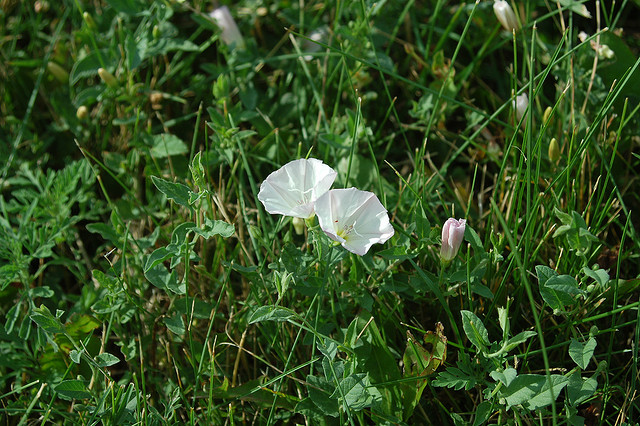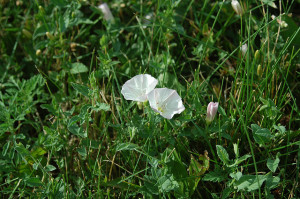At first glance, you might think the field bindweed is just another pretty little plant. It features many white or pink trumpet-shaped blossoms that are much like its relative, the morning glory. However, it is definitely one of the worst weeds that you could come across.
What Makes the Field Bindweed So Noxious?
The simple definition of a weed is a plant that is located where you don’t want it. Some plants have such difficult growing habits that you would not want them anywhere! For starters, they are very good at survival. This species is a perennial, so it is naturally structured to live more than one year.
The stems tend to act like a vine, twirling around surrounding plants and strangling them. One plant can spread across several yards, so it would not take many plants to overtake your lawn if you leave it unchecked for several years. It bears an abundance of flowers that can produce thousands of seeds, perpetuating the problem.
It gets even worse when you look at the root system. This tenacious plant develops an extensive mass of roots that can spread several feet beyond the width of the top plant. It has one main taproot, but also sends out side roots that grow for a few feet, then move down. It has the ability to send out new stems from any roots left behind after pulling as long as it has buds.
If It’s That Bad, What Can You Do?
There are systemic herbicides available that can help curb this problem. As the Penn State Extension office suggests, you should apply this when the flower buds have formed or just started to bloom. The plant is focusing its energy towards pollination and fruit production, so it uses up some of the energy stored in the roots to accomplish this. When you apply the herbicide, it has a greater chance of killing off the roots, though you may likely have to repeat this several times to truly get rid of the plant.
You can also achieve the same effect with manual removal over the long-term. If you keep removing the plant, it will slowly starve. Penn State asserts that a good time to remove the new growth is about 2 weeks after it appears.
Have you wrangled with field bindweed? How did you finally conquer it?
Image by wht_wolf9653 under a Flickr Creative Commons Attribution-ShareAlike License




